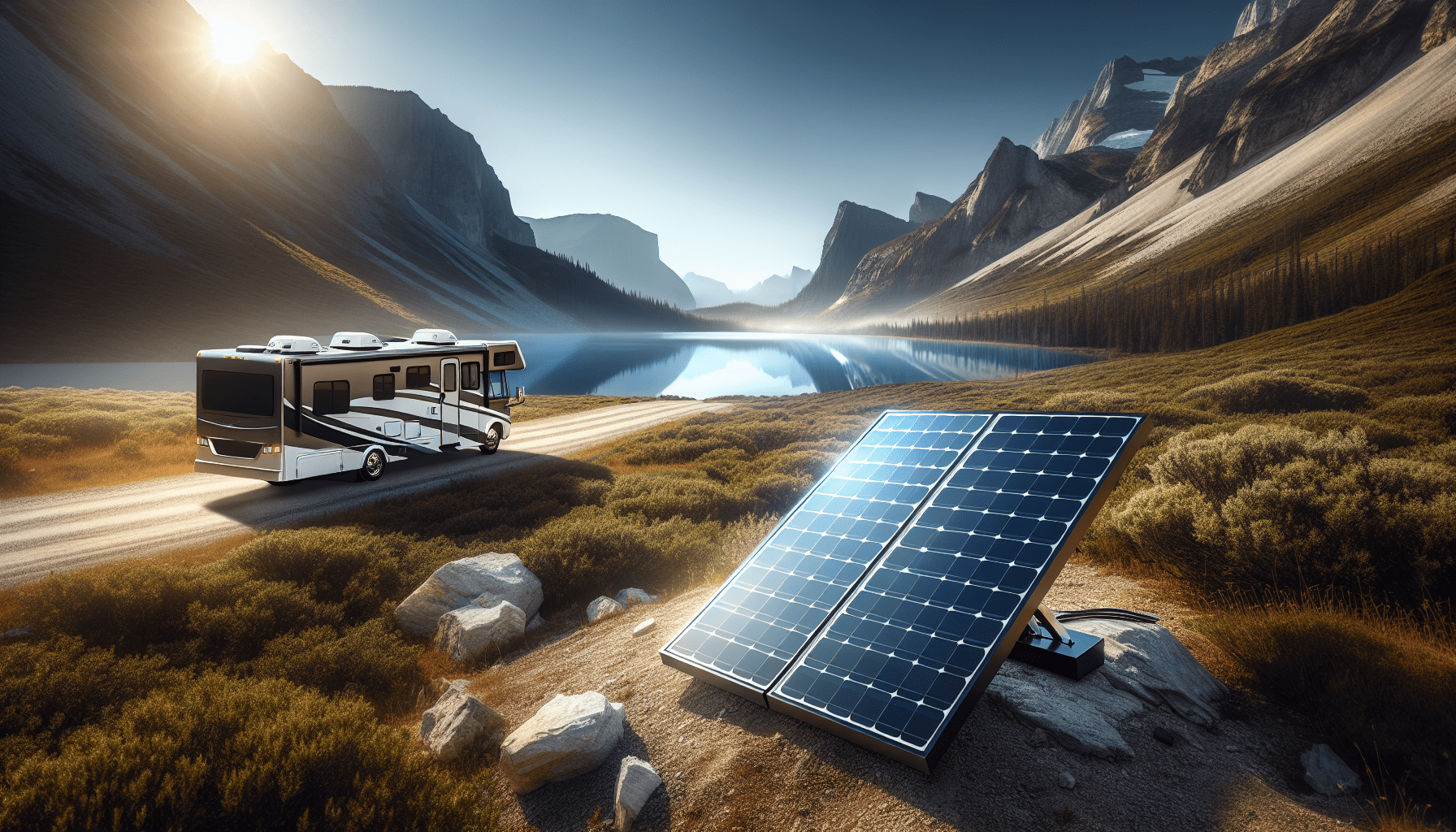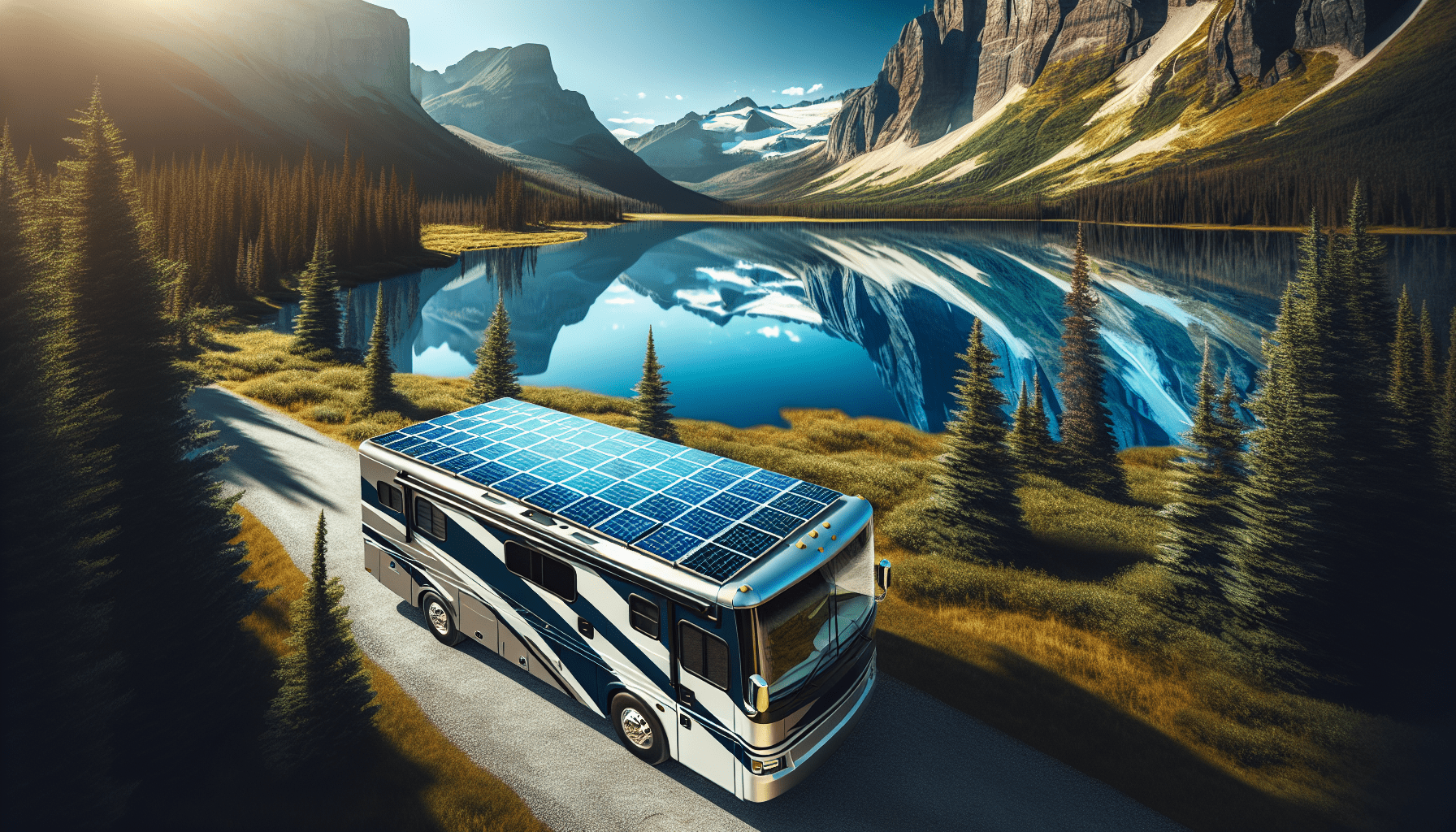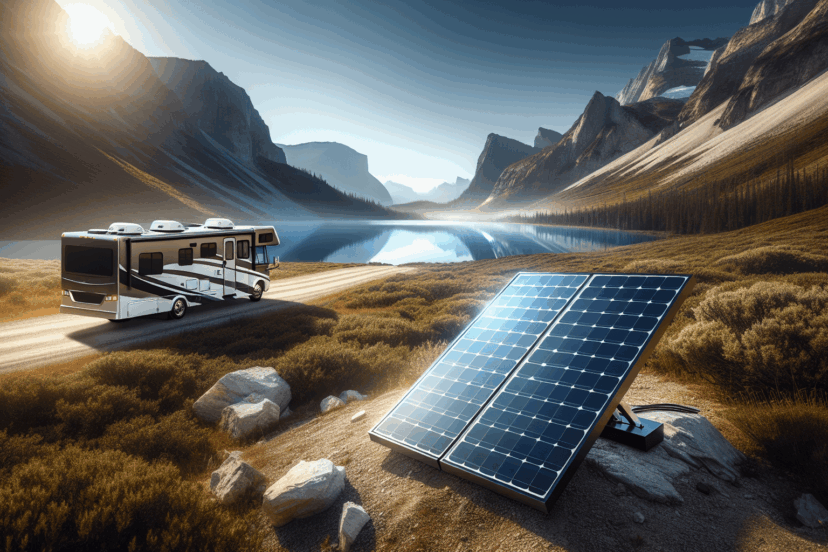Harnessing Solar Power for RV Adventures
As an Amazon Associate, I earn from qualifying purchases, at no additional cost to you. Disclaimer
Have you ever wondered how you can make your RV adventures more sustainable and cost-effective? If so, you’re in the right place to learn about the amazing benefits of harnessing solar power for your RV adventures. The idea of combining the thrill of the open road with the sun’s endless energy can transform your journeys—adding convenience, efficiency, and environmental consciousness.
By the end of this article, you’ll understand everything you need to know about using solar energy to power your RV, from the benefits to the basic setup, and from choosing the right components to optimizing the system for your specific needs. The aim here is to present the information in a friendly, approachable manner that demystifies the subject and gets you excited about the potential of solar power on your nomadic adventures.
Click Here to Go Solar and Save
Why Consider Solar Power for Your RV?
Harnessing solar power is more than just a trendy or eco-friendly upgrade for your RV. It can significantly enhance your travel experience in several ways. First and foremost, solar power grants you the freedom to camp in remote locations without worrying about electricity. Imagine parking anywhere with the assurance that your electricity needs are covered as long as the sun is shining. It’s an enticing prospect for anyone who loves to wander off the beaten path.
Apart from the freedom it provides, solar power is a quieter and cleaner alternative to traditional gas-powered generators. Not only will you reduce your carbon footprint, but you’ll also enjoy the tranquility of nature without the rumbling distraction of a generator. Additionally, by investing in solar energy, you are making an investment in reducing your long-term operational costs. After the initial setup, the sun’s energy is free of charge!
The environmental benefits, alongside the financial savings and operational autonomy, make solar power an attractive option for any RV enthusiast wanting to harness the sun’s infinite potential.
Understanding Solar Power Basics
It’s normal to feel overwhelmed initially when learning about solar energy, but it’s really quite straightforward once you break it down into its basic components and concepts. Let’s go through the essentials.
Solar Panels: The Heart of the System
Solar panels are the crucial primary component that captures sunlight and converts it into electricity. These panels are typically mounted on the roof of your RV. The most common types are monocrystalline, polycrystalline, and thin-film panels.
- Monocrystalline Panels: Offer the highest efficiency rates and best power capacity. They’re slightly more expensive but worth the investment if space is a concern.
- Polycrystalline Panels: Generally more affordable and boast a decent performance efficiency. They’re slightly larger compared to monocrystalline panels for the same power output.
- Thin-film Panels: Are the least efficient but extremely flexible and portable, making them suitable for special applications.
Each type has its pros and cons, and your choice will depend on your specific needs and budget.
Controller: The System’s Brain
The charge controller is the brain of your solar power setup. It’s responsible for regulating the voltage and current coming from the solar panels to the battery. By doing so, it prevents the battery from overcharging and ensures the accumulated energy is used effectively.
- Pulse Width Modulation (PWM): Less expensive and ideal for smaller setups.
- Maximum Power Point Tracking (MPPT): More efficient and suitable for larger setups requiring maximum charge efficiency.
Both types can work effectively depending on your system’s scale, but MPPT controllers extract more power from the same solar panels.
Batteries: Energy Storage Reservoirs
Batteries store the electricity generated by your solar panels, allowing you to use power even when the sun isn’t shining. Many RVers opt for deep-cycle batteries that are designed to be discharged and recharged repeatedly.
- Lead-Acid Batteries: Commonly used because of their lower upfront cost, though they require maintenance and have a shorter lifespan.
- Lithium-Ion Batteries: Provide longer lifespans and are generally maintenance-free, although they involve a higher upfront cost.
Selecting the right batteries is crucial for ensuring your system’s efficiency and reliability—consider your power needs and budget when making your choice.
Inverter: AC Power Conversion
Most household appliances and electronic devices run on AC (Alternating Current) power, whereas solar panels produce DC (Direct Current) electricity. Therefore, an inverter is needed to convert DC power from your batteries to AC power.
There are two types of inverters to consider:
- Modified Sine Wave Inverters: Cost-effective but less efficient for sensitive electronics.
- Pure Sine Wave Inverters: More expensive but essential if you need high-quality power output for sensitive devices.
Choosing an inverter will depend on the types of appliances you plan to run and your power quality needs.

Click Here to Power Your Home with Solar
Designing Your Solar Power System
Once you understand the components, the next step is designing a system that meets your specific needs without breaking the bank. Consider these key factors during the process:
Assessing Your Energy Needs
The first step in designing your solar power system is to assess your energy needs. Make a list of all the appliances and devices you intend to power with your solar setup and calculate their total power consumption. This will give you an idea of the size and capacity of the system you need to build.
You can determine your energy needs by understanding:
- The Daily Energy Consumption: Combining the wattage of each device with the average number of hours you’ll need them.
- Peak Power Demand: Calculating the maximum power you’ll require at any given time.
Creating a table might help with visualizing your average consumption:
| Appliance/Device | Wattage | Hours/Day | Wh/Day (Watt-hour) |
|---|---|---|---|
| LED Lights | 30 | 5 | 150 |
| Laptop | 50 | 4 | 200 |
| Fridge | 40 | 24 | 960 |
| TV | 60 | 3 | 180 |
This information will guide your choice in solar panels, batteries, and inverter capacity.
Choosing the Right Size of Solar Panels
With an understanding of your power needs, you can determine how many solar panels you’ll require. You’ll need to take into account your geographic location, since the availability of sunlight varies. For example, sunnier regions may require fewer panels compared to areas with less sunlight.
Calculating Battery Capacity
Based on your daily energy consumption, calculate the battery capacity required to store sufficient power. You’d likely want a reserve for a couple of days without sunshine to ensure you have power for overcast days or nighttime usage.
Opting for the Right Charge Controller and Inverter
After deciding on the panels and battery, select a suitable charge controller and inverter based on your power system’s requirements. Choosing the right inverter and charge controller ensures that you maximize efficiency and safety in your solar power system.
Installation and Maintenance
With your system designed on paper, it’s time to install it in your RV. You can either do this yourself if you’re handy with tools and electronics or hire a professional to ensure a functional setup.
Installation Tips
- Mounting Solar Panels: Secure panels on the roof so they face maximum sunlight. Tilting mechanisms can enhance efficiency by angling panels toward the sun.
- Connecting the Charge Controller and Inverter: Follow manufacturer instructions for connecting components, ensuring a safe and secure setup.
- Wiring and Connectivity: Use the appropriate wire gauge and connectors to prevent energy loss and ensure safety.
Maintenance for Longevity
Like any other system, solar power setups require regular checks and maintenance to function optimally:
- Clean the Solar Panels: Dust and dirt can reduce panel efficiency. Regularly clean them off with water and a non-abrasive cloth.
- Monitor Battery Health: Inspect battery connections and electrolyte levels (if applicable) to prevent failures.
- Check All Connections: Regularly check all wiring and connections for any signs of wear or damage.
Keeping up with maintenance ensures you enjoy uninterrupted power supply during your adventures.

Click Here to Discover Solar-Powered Solutions
Tips for Optimizing Solar Power Use
Beyond having the right equipment, it’s important to utilize that setup effectively to get the most out of your solar system.
Efficient Power Management
Use energy-efficient appliances and LED lighting to minimize consumption, enabling your system to run longer on less power. Ensuring devices are only on when necessary significantly extends your available power.
Monitoring and Adjusting Usage
You should regularly monitor your power system to understand usage patterns and adjust accordingly—using energy meters or system monitors can provide insights into how energy is consumed and highlight areas for improvement.
Positioning and Timing
Whenever possible, position your RV to maximize exposure to sunlight. Incorporating solar tracking or manual adjustments to the tilt of your panels can enhance energy capture, especially in the early morning or late afternoon when the sun’s angle changes.
Conclusion: Enjoying Sustainable RV Adventures
By harnessing solar power, your RV experiences can become not only more self-sustained and environmentally conscious but also more cost-effective and liberating. Whether you’re a weekend warrior or a full-time road nomad, solar energy opens up possibilities for exploring remote, off-grid locations without compromising on the comforts of electricity.
Solar power is not just a renewable energy source; it’s a way to embrace a sustainable, adventurous lifestyle, allowing you to connect with nature while preserving it. By following the guidelines and insights provided, you can successfully implement a solar power system that meets your needs, letting the sun fuel your next adventure.

